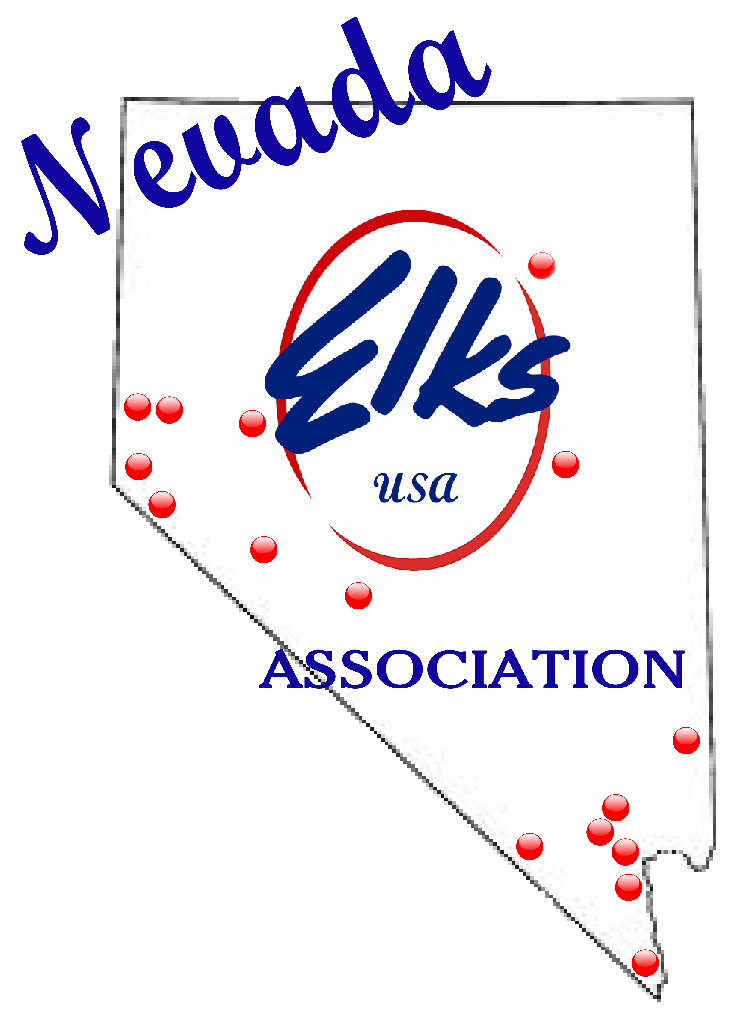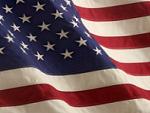
NEVADA STATE ELKS ASSOCIATION
At the Grand Lodge Convention in 1961 at Miami Beach, the committee on Americanism was created and charged with "implementing the patriotic activities of the Order and its subordinate Lodges."
The creation of the Elks Americanism Committee in 1961 met an important need in a critical time in our history. The Committee provided our Lodges with constructive and definite programs for strengthening the spirit of American patriotism in their communities, and vigorously promoting their use. The response of our Lodges was both prompt and enthusiastic, and the result has been a tremendous expansion in the Order's patriotic activities... and a major contribution to the security of this nation.
Our Government has, time and again, enlisted the aid of the Order in patriotic undertakings where civilian cooperation was deemed essential.
Membership in the Order of Elks is a "badge of citizenship", for none but an American can be an Elk. "Love of Country, Home and Mind" are its principal tenets, and our country's flag is raised in silken benediction over the Altar of every Elks Lodge.
With its all pervading spirit of good will, the Order makes an irresistible appeal to men and women who deeply love their country, cherish fraternal association, and welcome an opportunity to serve their communities.
(A special day in Elk history and tradition)
On June 14, 1777, the Continental Congress adopted the Stars and Strips as the new nation’s flag. There were individuals and organizations that promoted the idea of observing that anniversary each year, but the idea really took off when the Elks decided in 1907 to have each of its lodges mark the date. A decade later, as hundreds of thousands of their brothers fought in Europe, the Elks persuaded President Woodrow Wilson to recognize Flag Day with a proclamation. With the armistice ending World War I, the June 14 celebrations took on a new importance for returning veterans. One who was especially impressed by the ceremonies in his Elks Lodge in Independence, Missouri, was Harry Truman, who had commanded an infantry company in France. When he became President, Truman issued proclamations for Flag Day as veterans returned from another war, but he also felt that the occasion should have legal sanction. Congress responded by passing a joint resolution and the practice of setting aside June 14 of each year as a special day to honor the flag was codified into law.
Contact your local TV stations and cable systems and furnish them with a photo or slide of Old Glory, flying over the Elks lodge or a local landmark. Ask them to remind viewers during station breaks that June 14 is a time to honor America and her troops by honoring the Flag.
The name “Old Glory” was first applied to the U.S. flag by a young sea captain who lived in Salem, Mass. On his twenty-first birthday, March 17, 1824, Capt. William Driver was presented a beautiful flag by his mother and a group of local young ladies. Driver was delighted with the gift. He exclaimed, “I name her ‘Old Glory.’” Then Old Glory accompanied the captain on his many voyages.
Captain Driver quit the sea in 1837 and settled in Nashville, Tenn. On patriotic days, he displayed Old Glory proudly from a rope extending from his house to a tree across the street. After Tennessee seceded from the Union in 1861, Captain Driver hid Old Glory by sewing the flag inside a comforter. When Union soldiers entered Nashville on February 25, 1862, Driver removed Old Glory from its hiding place, carried the flag to the state capitol building, and proudly raised it for all to see.
Shortly before his death, the old sea captain placed a small bundle into the arms of his daughter. He said to her, “Mary Jane, this is my ship flag, Old Glory. It has been my constant companion. I love it as a mother loves her child. Cherish it as I have cherished it.”
The flag remained as a precious heirloom in the Driver family until 1922. Then it was sent to the Smithsonian Institution in Washington, D.C., where it is carefully preserved under glass today.
